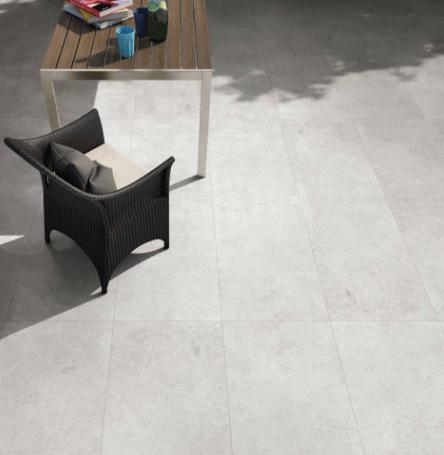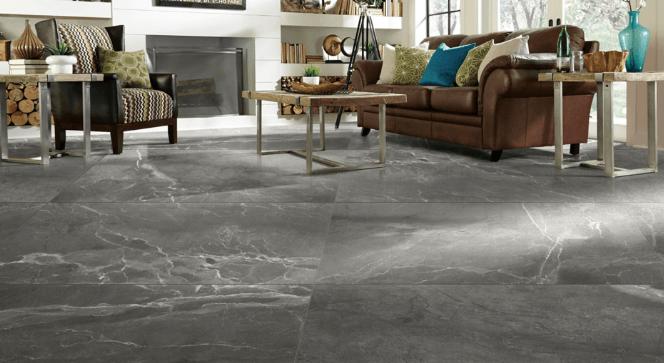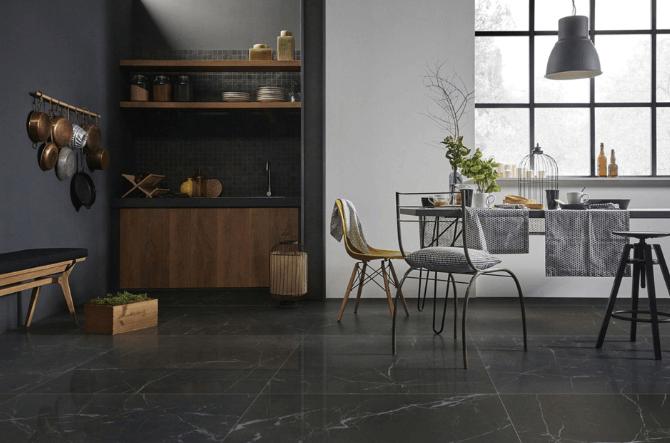As we navigate through various design trends, homeowners and interior designers often ponder color questions. It is because the color of the wall and floor tiles can significantly impact the overall aesthetics and ambiance of a space. Then, in this post, the author will guide you to make a discussion about the color of the wall and floor tiles.
Do Floor and Wall Tiles Need to Match?
It depends on your preferences and the house design. The same color of the floor and wall tiles can help you create a seamless surface and make your house look larger. Take the grey floor and wall tiles as an example.
Grey floor and wall tiles are commonly used in modern-style houses. The grey floor and wall tiles would give your interior house a sleek, minimalist look. However, the different colors in wall tiles and floor tiles also give the designer different styles. In the following section, the author will list their benefits.
Grey floor and wall tiles are commonly used in modern-style houses. The grey floor and wall tiles would give your interior house a sleek, minimalist look. However, the different colors in wall tiles and floor tiles also give the designer different styles. In the following section, the author will list their benefits.
●The Same Color in wall and floor tiles
Cohesive Look: Using the same color for both wall and floor tiles create a seamless and uniform appearance, making the room feel more spacious and visually balanced.
Soothing Ambiance: A monochromatic color scheme can create a calming and soothing atmosphere, especially if you choose neutral or soft hues.
Easier to Coordinate: If you're concerned about coordinating other design elements, matching tiles can serve as a reliable foundation, making it simpler to select furniture, accessories, and decor.
Soothing Ambiance: A monochromatic color scheme can create a calming and soothing atmosphere, especially if you choose neutral or soft hues.
Easier to Coordinate: If you're concerned about coordinating other design elements, matching tiles can serve as a reliable foundation, making it simpler to select furniture, accessories, and decor.
●The Different Colors in wall and floor tiles
Visual Interest: Using contrasting colors for wall and floor tiles can add visual interest and create focal points in the room.
Highlighting Features: Different colored tiles can help highlight specific architectural features or certain areas of the room, such as an accent wall or a decorative pattern on the floor.
Space Definition: Distinguishing between the wall and floor with different colors can help define and separate the different areas within a large or open-plan room.
Highlighting Features: Different colored tiles can help highlight specific architectural features or certain areas of the room, such as an accent wall or a decorative pattern on the floor.
Space Definition: Distinguishing between the wall and floor with different colors can help define and separate the different areas within a large or open-plan room.
Should Floor Tiles be Lighter or Darker Than Wall Tiles?
Then, the selection of color also is a question. The answer varied from various factors. It is because the aesthetic is subjective, so you can determine which should be lighter or darker. In the decoration industry, if you want to get a good color contrast, the floor tiles should be at least 3 shades darker than the walls.
Is It Better to Have Light or Dark Tile Floors?
It depends on what kitchen tile designs you like. The ligher color floor tiles reflect more light, making the room feel larger, more open, and airy. They can enhance the overall brightness of the space, especially in rooms with limited natural light. By contrast, dark floor tiles (e.g. black floor tiles) tend to narrow the space size visually.
As for the dark floor tile, it can create a sense of warmth and coziness in a room, especially in larger spaces or during colder months. Dark floors can add a touch of sophistication and drama to the room, providing a sense of luxury and elegance.
As for the dark floor tile, it can create a sense of warmth and coziness in a room, especially in larger spaces or during colder months. Dark floors can add a touch of sophistication and drama to the room, providing a sense of luxury and elegance.
Should Kitchen Floor Be Lighter or Darker?
It depends on the size of your kitchen. Generally speaking, the light-colored floor tiles would make small-size kitchens look bigger. The dark-colored floor tiles tend to let your kitchen look smaller but create a cozy and inviting atmosphere.
As for the stain concealment, light-colored tiles tend to hide stains and dirt better than darker tiles, making maintenance and cleaning easier, particularly in high-traffic areas. We can find that grey kitchen floor tiles would not make to dirt so obvious.
As for the stain concealment, light-colored tiles tend to hide stains and dirt better than darker tiles, making maintenance and cleaning easier, particularly in high-traffic areas. We can find that grey kitchen floor tiles would not make to dirt so obvious.
What Color Tile Never Goes Out of Style?
The neutral color tiles never go out of style, because they are timeless, versatile, and can easily adapt to different interior design styles and trends. The neutral color tiles include the following colors:
●White Tiles: White tiles offer a clean, fresh, and bright appearance. They can make a room feel more spacious and serve as a blank canvas to complement various decor styles. The calacatta white tile is ideally applied to the living room.
●Beige Tiles: Beige tiles provide a warm and inviting atmosphere. They can add a touch of coziness and work well with both traditional and contemporary designs.
●Gray Tiles: Gray tiles have become increasingly popular due to their modern and sophisticated appeal. They come in various shades, from light gray to charcoal, offering a wide range of design possibilities.
●Cream/Ivory Tiles: Cream or ivory tiles offer a soft and elegant look. They can bring a sense of warmth and timelessness to any space.
●Taupe Tiles: Taupe tiles are a blend of brown and gray, offering a versatile and calming color option that complements many decor styles.
●White Tiles: White tiles offer a clean, fresh, and bright appearance. They can make a room feel more spacious and serve as a blank canvas to complement various decor styles. The calacatta white tile is ideally applied to the living room.
●Beige Tiles: Beige tiles provide a warm and inviting atmosphere. They can add a touch of coziness and work well with both traditional and contemporary designs.
●Gray Tiles: Gray tiles have become increasingly popular due to their modern and sophisticated appeal. They come in various shades, from light gray to charcoal, offering a wide range of design possibilities.
●Cream/Ivory Tiles: Cream or ivory tiles offer a soft and elegant look. They can bring a sense of warmth and timelessness to any space.
●Taupe Tiles: Taupe tiles are a blend of brown and gray, offering a versatile and calming color option that complements many decor styles.
Conclusion
The color of the floor and wall tiles is a crucial aspect of interior design, influencing the look and feel of living spaces. While matching tiles can create a sense of continuity, mixing and contrasting tiles is becoming increasingly popular for a more unique and visually appealing look. Therefore, you may spend some effort on it.



